The Statues Of The Trevi Fountain: A Masterpiece Of Mythology, Art, And Symbolism
The Trevi Fountain, or Fontana di Trevi, is one of the most famous landmarks in Rome, Italy.
It’s not just a fountain; it’s a spectacular work of art that combines the grandeur of Roman architecture with stunning sculptures.
Located in the Trevi district of Rome, the fountain attracts millions of visitors each year who come to marvel at its beauty and take part in the tradition of tossing a coin into its waters.

History Of The Trevi Fountain
The history of the Trevi Fountain dates back to ancient Rome.
It was built at the endpoint of the Aqua Virgo, one of the oldest aqueducts in the city, which was constructed in 19 BC by Marcus Agrippa, a close ally of Emperor Augustus.
The aqueduct was crucial in supplying water to the Roman baths and fountains, including the Trevi Fountain.
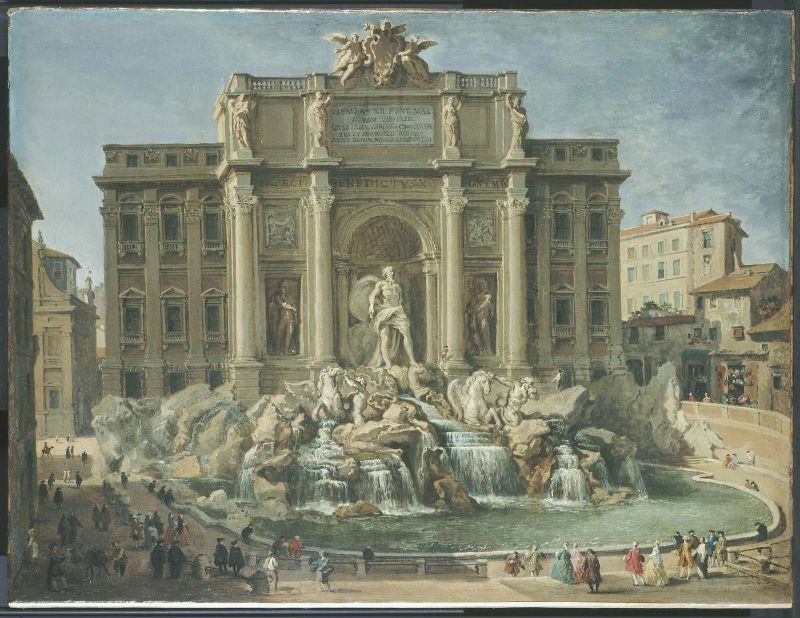
The fountain as we know it today was designed by architect Nicola Salvi in 1732 and completed in 1762 by Giuseppe Pannini after Salvi’s death.
The project was commissioned by Pope Clement XII, who wanted to enhance the city with a grand monument.
The fountain was built against the backdrop of the Palazzo Poli, an imposing palace that adds to the fountain’s majestic appearance.

Architectural Design
The Trevi Fountain is a magnificent example of Baroque architecture, a style known for its elaborate and dramatic features.
The fountain is made of travertine stone, a type of limestone that has been used in many of Rome’s famous buildings.
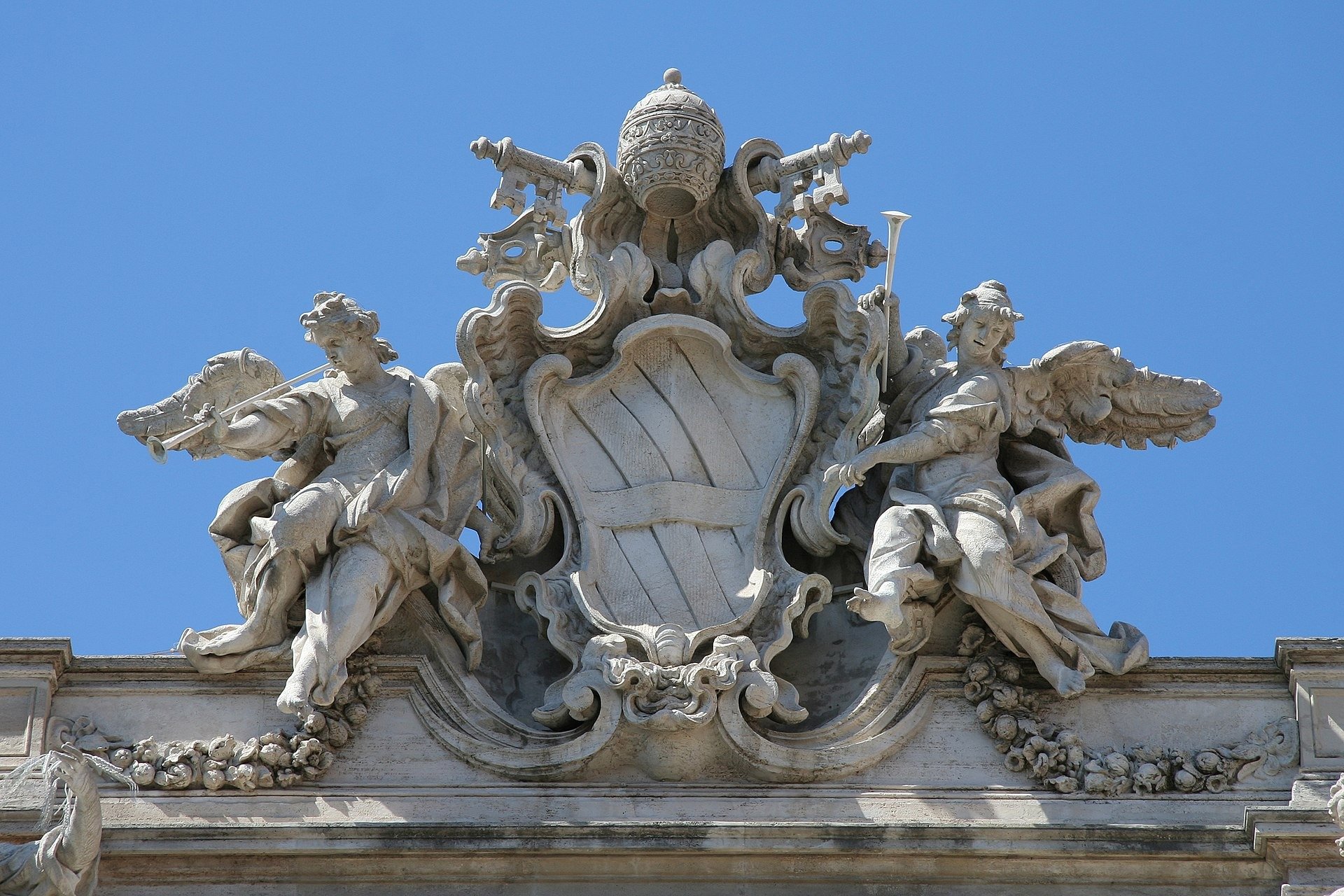
It stands at an impressive 26.3 meters (86 feet) high and 49.15 meters (161.3 feet) wide, making it the largest Baroque fountain in Rome.
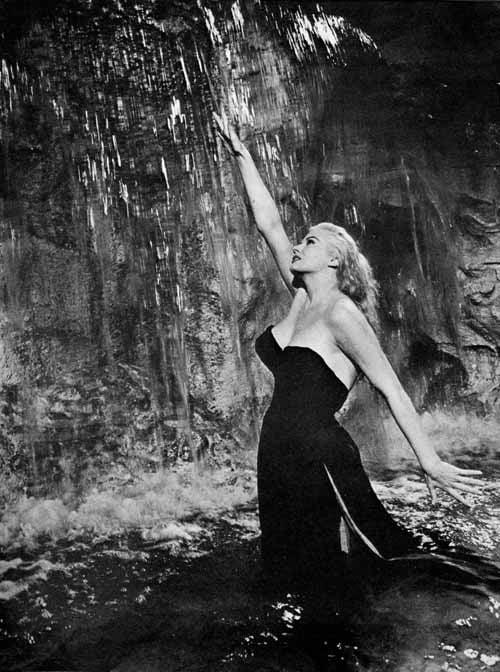
The design of the fountain is centered around the figure of Oceanus, the god of all water, who dominates the scene.
He stands in a large, shell-shaped chariot pulled by two horses, each with a different temperament—one calm and the other restless.
These horses are guided by Tritons, mythological sea creatures who symbolize the varying moods of the sea.
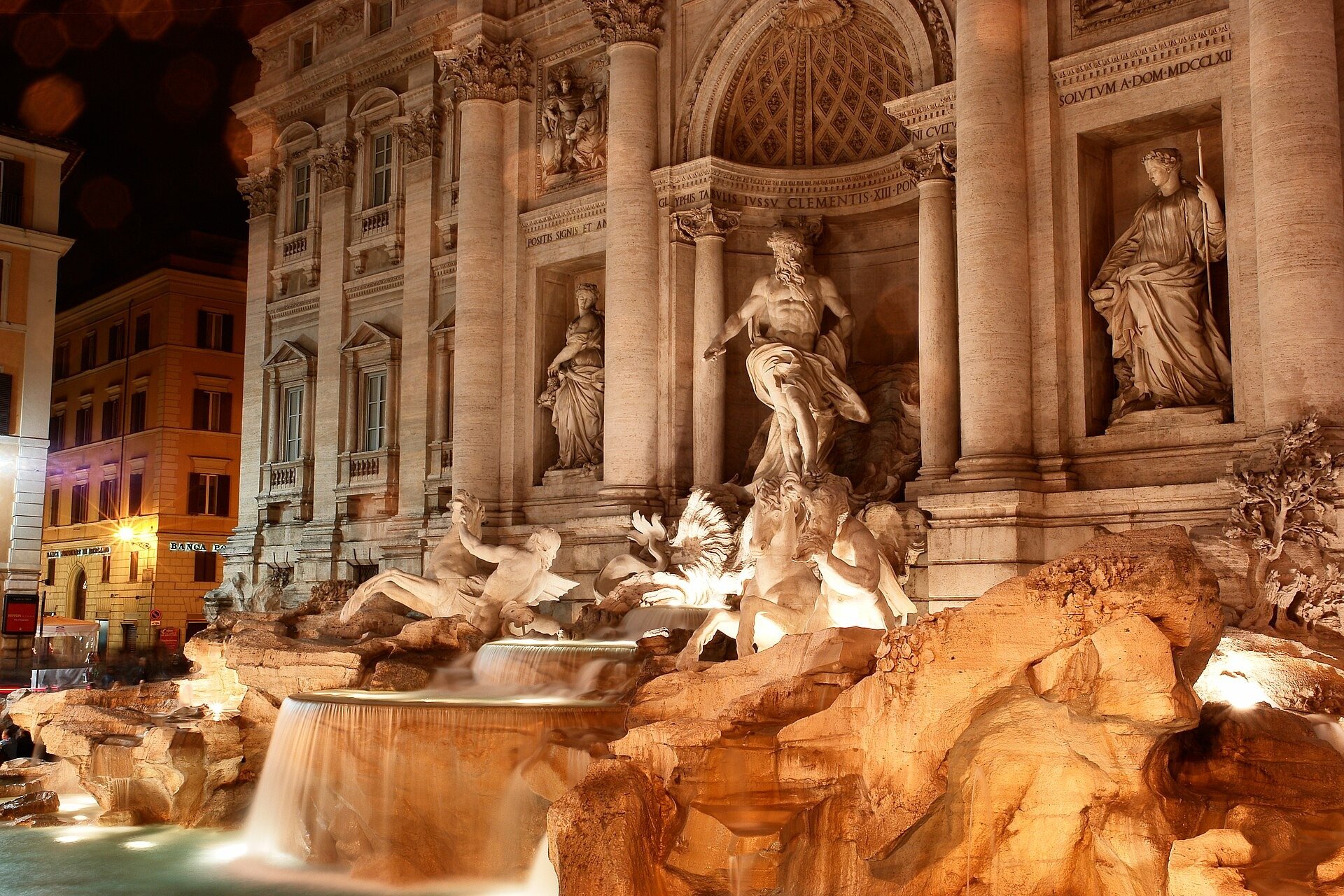
Water And Engineering
One of the most fascinating aspects of the Trevi Fountain is its engineering.
The fountain is fed by the Aqua Virgo aqueduct, which has provided water to Rome for over 2,000 years.
The water flows through the fountain in a carefully designed system, creating a stunning visual effect as it cascades over the rocks and fills the large pool below.
The sound of the water adds to the fountain’s serene atmosphere, making it a peaceful place to relax and enjoy the beauty of Rome.

The Statues And Reliefs
Oceanus: The Central Figure
At the center of the Trevi Fountain is Oceanus, the god of all water.
He’s shown riding in a chariot pulled by two sea horses, also known as hippocampus.
Oceanus looks powerful and in control as water flows from the fountain’s spouts.
The two sea horses represent the different moods of the sea—one is calm and gentle, while the other is wild and restless.
This symbolizes the unpredictable nature of the ocean.
Oceanus is accompanied by two Tritons, who help guide the horses, further emphasizing his control over the seas.
Abundance and Health: The Side Statues
On either side of Oceanus, there are two other statues representing Abundance and Health.
Abundance is depicted as a woman holding a cornucopia, a horn overflowing with fruits and flowers.
This symbolizes the wealth and prosperity that water brings, essential for life and growth.
In ancient Rome, aqueducts brought fresh water into the city, ensuring the well-being of its people.
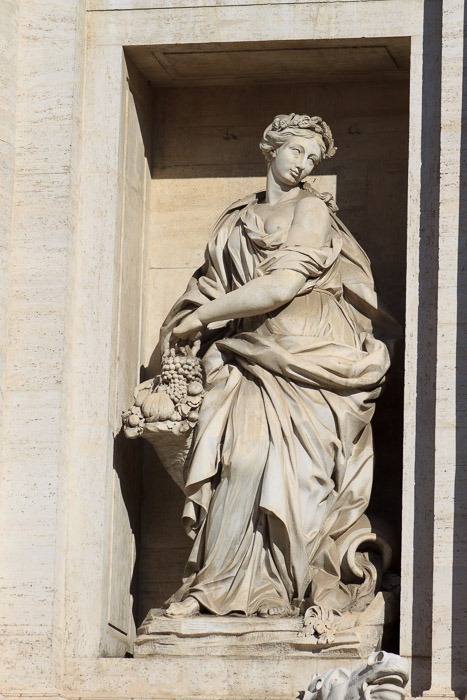
Health is shown holding a cup from which a snake drinks, symbolizing the healing power of water.
The snake is often linked to Asclepius, the Greek god of medicine, highlighting the importance of clean water for health and hygiene.
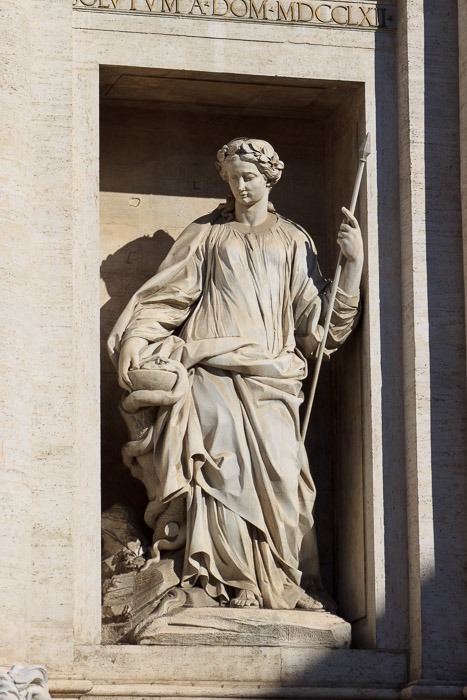
The Reliefs: Telling the Story of the Aqua Virgo
Above the statues of Abundance and Health, two reliefs (sculpted scenes) tell the story of the Aqua Virgo, an ancient Roman aqueduct that still feeds the fountain.
The first relief shows Agrippa, a Roman general, approving the plans for the aqueduct.
This highlights the importance of water management in ancient Rome.

The second relief shows a young virgin pointing out the water source that would become the Aqua Virgo.
This scene commemorates the legend behind the aqueduct’s name and the purity of the water it delivered.
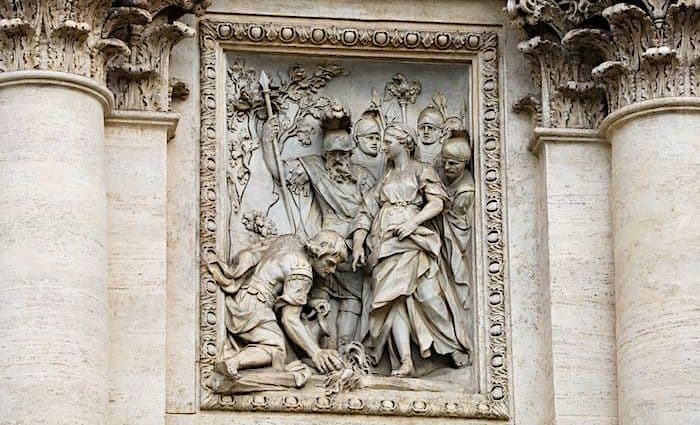
The Four Virtues: Statues on the Palazzo Poli
On top of the Palazzo Poli, the grand building behind the fountain, stand four statues representing the virtues of Temperance, Strength, Prudence, and Abundance.
Temperance represents moderation and self-control, essential in managing resources like water.
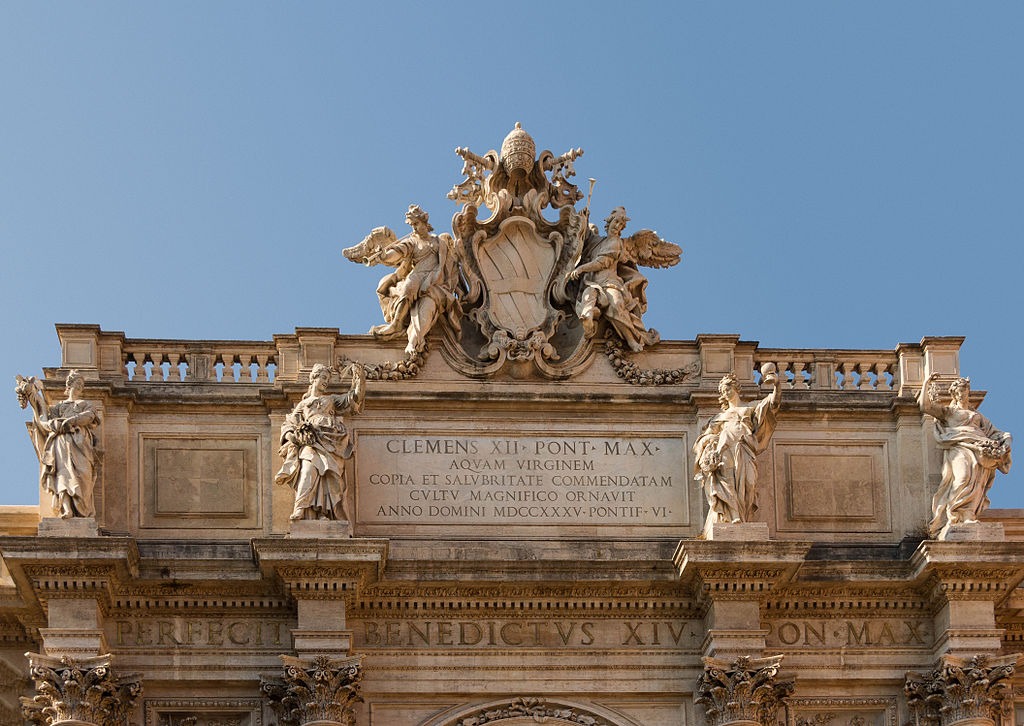
Strength symbolizes the power needed to protect and maintain the water supply.
Prudence stands for wisdom and careful planning, important for the long-term management of resources.
Abundance again emphasizes the wealth and prosperity that water brings to the city.
The Coin Toss Tradition
A visit to the Trevi Fountain wouldn’t be complete without participating in the famous coin toss tradition.
According to legend, tossing a coin into the fountain over your left shoulder with your right hand ensures that you will return to Rome someday.
This tradition became widely known after the 1954 movie “Three Coins in the Fountain.”
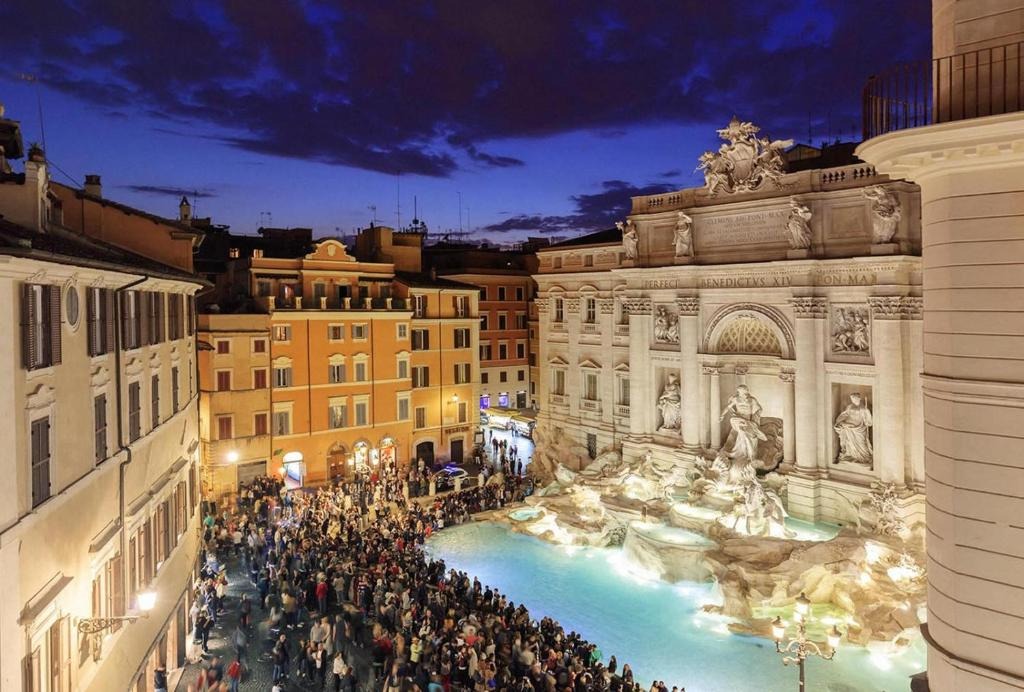
Each year, an estimated €1.5 million worth of coins are tossed into the fountain.
The money is collected and donated to charity, providing assistance to Rome’s less fortunate.


